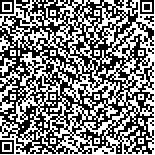钟佳利,景小珊,梁莹,等.经颅直流电刺激对缺血性脑卒中后认知障碍的影响:基于纤维束示踪空间统计学分析[J].中华物理医学与康复杂志,2025,47(9):815-821
扫码阅读全文

|
| 经颅直流电刺激对缺血性脑卒中后认知障碍的影响:基于纤维束示踪空间统计学分析 |
|
| |
| DOI:10.3760/cma.j.cn421666-20240816-00664 |
| 中文关键词: 缺血性脑卒中 认知障碍 扩散张量成像 纤维束示踪空间统计 磁共振成像 |
| 英文关键词: Ischemic stroke Cognitive impairment Diffusion tensor imaging Tract-based spatial statistics Magnetic resonance imaging |
| 基金项目:北京市教育委员会科学研究计划项目资助(KM202110025022) |
|
| 摘要点击次数: 539 |
| 全文下载次数: 419 |
| 中文摘要: |
| 目的 基于纤维束示踪空间统计(TBSS)技术评估经颅直流电刺激(tDCS)对缺血性脑卒中(IS)后认知障碍的影响。 方法 募集轻度和轻度以上IS后认知功能障碍患者51例,按随机数字表法分为电刺激组(26例)和对照组(25例)。2组患者均接受常规康复治疗,电刺激组在此基础上增加tDCS治疗,对照组则增加假tDCS治疗。于治疗前和治疗15 d后(治疗后)对2组患者进行简易智能精神状态量表(MMSE)和蒙特利尔认知评估量表(MoCA)评估,同时采集其扩散张量成像(DTI)数据,基于TBSS分析2组患者治疗前、后的各向异性分数(FA)值的差异,并与MMSE和MoCA评分的改善值(组内治疗前、后的差值)进行Pearson相关分析。 结果 治疗后,2组患者的MMSE和MoCA评分较组内治疗前均显著改善(P<0.05),且电刺激组治疗后的MMSE和MoCA评分较对照组治疗后改善更大,差异均有统计学意义(P<0.05)。治疗后,电刺激组在双侧胼胝体膝部、双侧额枕下束、双侧丘脑前辐射、左侧上纵束的FA值较组内治疗前均显著升高(P<0.05),对照组在左侧上纵束和左侧丘脑前辐射的FA值较组内治疗前均显著升高(P<0.05)。治疗后,电刺激组左侧上纵束FA的变化值与MMSE评分的改善值呈正相关(r=0.42,P=0.03),且左侧丘脑前辐射FA的变化值与MoCA评分的改善值呈正相关(r=0.45,P=0.02)。 结论 tDCS可显著改善IS后认知功能障碍患者的认知功能,并促进其白质纤维束的恢复,且丘脑前辐射和上纵束的FA值可能是患者认知功能恢复的有效的预测指标。 |
| 英文摘要: |
| Objective To evaluate any effect of transcranial direct current stimulation (tDCS) on cognitive impairment after an ischemic stroke (IS) using tract-based spatial statistics (TBSS). Methods Fifty-one patients with mild or more serious cognitive impairment after an IS were divided into an electrical stimulation group (26 cases) and a control group (25 cases) using a random number table. In addition to conventional rehabilitation treatment, the electrical stimulation group was given tDCS, while the control group was given sham tDCS for 15 days. Before and after the treatment, both groups were evaluated using the Mini-mental State Examination (MMSE) and the Montreal Cognitive Assessment (MoCA). Diffusion tensor imaging (DTI) was also performed. TBSS were computed for the differences in fractional anisotropy (FA) between the two groups before and after the treatment, and Pearson correlation analysis was applied to the pre-treatment and post-treatment FA differences within each group and the improvements in MMSE and MoCA scores. Results After the treatment, the average MMSE and MoCA scores of both groups had improved significantly, but the improvement was significantly greater in the electrical stimulation group. After the treatment, the FA values among the electrical stimulation group had increased significantly in the bilateral genu of the corpus callosum, the bilateral inferior fronto-occipital fasciculus, the bilateral anterior thalamic radiation and the left superior longitudinal fasciculus. In the control group significant increases were recorded only in the left superior longitudinal fasciculus and the left anterior thalamic radiation. The FA change in the left superior longitudinal fasciculus of the electrical stimulation group was then positively correlated with the improvement in MMSE scores (r=0.42), and that in the left anterior thalamic radiation was positively correlated with the improvement in MoCA scores (r=0.45). Conclusions tDCS can significantly improve the cognition of stroke survivors with cognitive impairment and promote the recovery of white matter fiber tracts. The FA values of the anterior thalamic radiation and the superior longitudinal fasciculus may be useful predictors and indicators of the recovery of cognitive function among such patients. |
|
查看全文
查看/发表评论 下载PDF阅读器 |
| 关闭 |